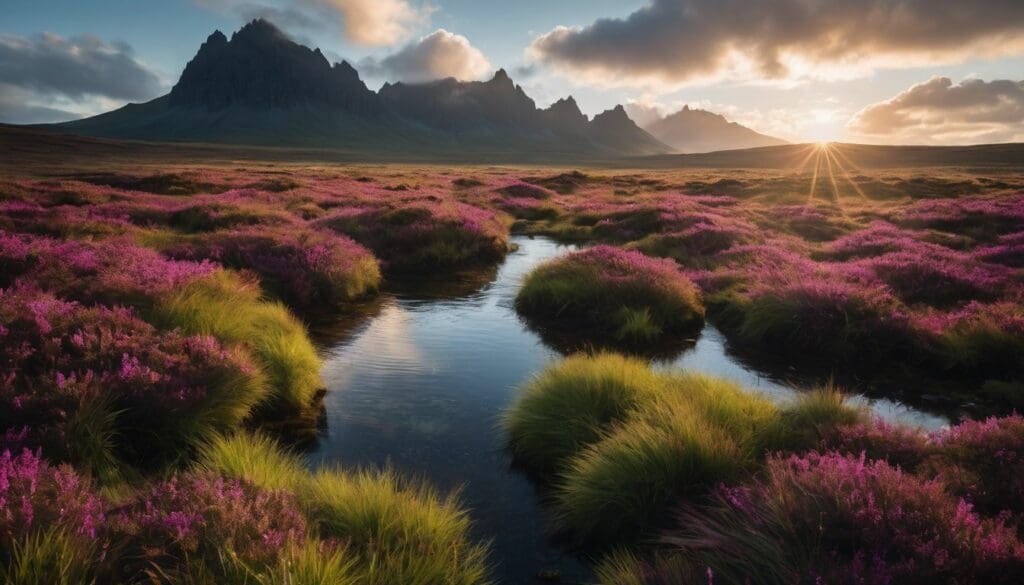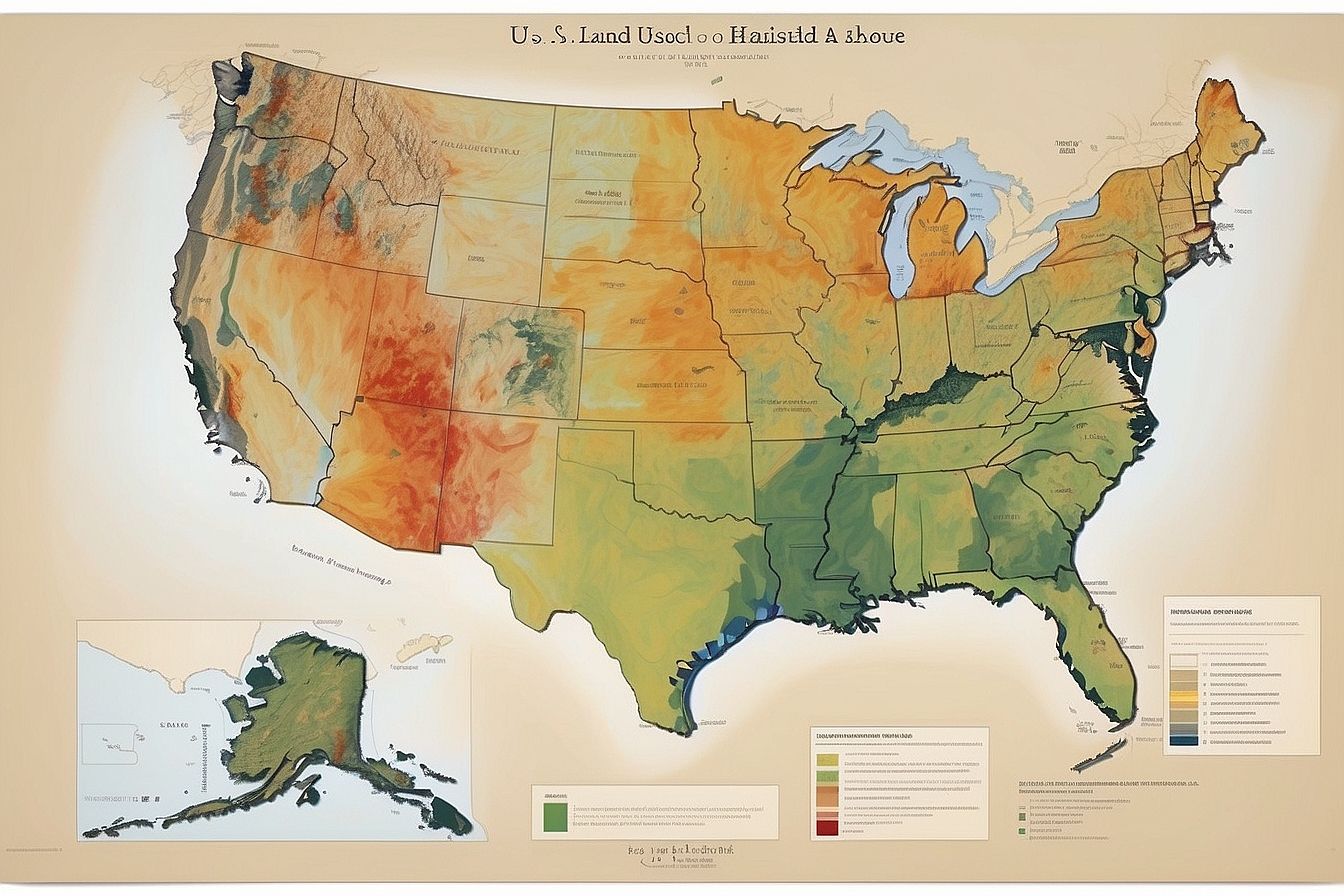We all recognise the pressing need to combat climate change, and yet, it can be quite a challenge to know exactly where to begin. Just like you, we’ve watched with concern as alarming reports unfold, fully aware that every corner of our natural world has its part to play.
And here’s an astonishing fact: peatlands – those often overlooked wetlands – actually store double the amount of carbon than the forests of our entire globe do. Fancy that! In our forthcoming article, we’ll explain why safeguarding these essential habitats is vital for Mother Earth’s wellbeing and share practical steps on how we might contribute positively.
So why not join us in exploring the marvels of peatlands? Indulge your curiosity and let’s make a genuine difference together.
Key Takeaways
- Peatlands store double the carbon of global forests, making their protection key in tackling climate change.
- Human activities like draining and development threaten peatlands, causing carbon release and impacting indigenous livelihoods.
- Preserving peatlands is essential for maintaining biodiversity, as they support rare species and are crucial habitats for wildlife.
- Peatlands can prevent natural disasters; they absorb excess rain to reduce flooding risks and minimise wildfire outbreaks when healthy.
- Restoration efforts must focus on water management, re – vegetation with native plants, using indigenous knowledge, creating buffer zones and community collaboration.
Threats to Peatlands
Peatlands are facing threats from climate change, degradation, and destruction, which not only impact the environment but also have a significant effect on indigenous peoples who rely on these ecosystems for their livelihoods.
These threats call for urgent action to protect and preserve peatlands for future generations.
Climate change
Climate change poses a significant threat to peatlands, ecosystems rich in stored carbon and biodiversity. As the planet warms, these natural carbon sinks become vulnerable, releasing vast amounts of greenhouse gases into the atmosphere when disturbed or dried out.
We see shifting weather patterns and rising temperatures accelerating peat decomposition, turning these habitats from carbon storers to carbon emitters.
Our actions have direct consequences on these critical areas. With each degree of warming, we risk further unbalancing this delicate ecosystem. Protecting peatlands must be a priority for us all if we aim to stem climate change’s tide and secure a stable environment for future generations.
By actively restoring damaged peatlands and preserving existing ones, we help maintain their capacity as robust buffers against global warming while safeguarding the home of unique species and ancient plant material that forms our natural heritage.
Degradation and destruction
Peatlands face degradation and destruction from various human activities such as drainage, extraction of peat for fuel, agriculture, and infrastructure development. These actions disrupt the natural hydrology of peatlands, leading to the release of stored carbon dioxide into the atmosphere.
Additionally, deforestation in surrounding areas contributes to sedimentation and pollution that further degrade these vital ecosystems.
Furthermore, unsustainable land use practices impact peatland vegetation and water levels while disrupting habitats for indigenous flora and fauna. Ultimately, these activities lead to irreversible damage to the delicate balance within peatland ecosystems.
Impact on indigenous peoples
Degradation and destruction of peatlands have a direct impact on indigenous peoples, who depend on these ecosystems for their livelihoods. The loss of peatlands disrupts traditional land use practices and can lead to the displacement of indigenous communities.
In addition, the degradation of peatlands affects access to important resources such as clean water, medicinal plants, and food sources that are essential for indigenous cultures.
Furthermore, peatland degradation contributes to the loss of cultural heritage sites and sacred landscapes, which hold significant spiritual and historical value for indigenous peoples.
Protecting Peatlands
Peatlands are crucial for carbon sequestration, preserving biodiversity, and preventing natural disasters. Restoration efforts are essential to ensure the long-term sustainability of peatland ecosystems.
Importance for carbon sequestration
Peatlands play a crucial role in carbon sequestration as they absorb and store large amounts of carbon from the atmosphere. This process occurs when decomposing plant material accumulates in waterlogged conditions, preventing its full breakdown and enabling the accumulation of organic matter.
Consequently, peatlands act as essential carbon sinks, helping to reduce greenhouse gas emissions and mitigate climate change.
Moreover, preserving and restoring peatlands contributes significantly to global efforts in reducing carbon levels. By conserving these habitats and promoting sustainable land management practices, we can safeguard their vital function in storing carbon and combatting climate change effectively.
The significance of peatlands for carbon sequestration underscores the urgency for their protection and restoration to secure a sustainable future for our planet.
Role in preserving biodiversity
Peatlands play a crucial role in preserving biodiversity by providing unique habitats for diverse plant and animal species. These wetland ecosystems support a rich variety of flora and fauna, including rare and endangered species such as otters, dragonflies, and insect-eating plants.
The acidic nature of peatlands creates specific conditions that enable these organisms to flourish, making them an essential part of our planet’s ecosystem.
Furthermore, the preservation of peatlands helps maintain the delicate balance of various ecosystems by serving as breeding grounds for migratory birds and supporting the life cycles of many aquatic creatures.
Preventing and mitigating natural disasters
Protecting peatlands is crucial in preventing and mitigating natural disasters. The dense vegetation and spongy moss of peatlands act as a natural sponge, absorbing excess rainfall and reducing flood risk.
Furthermore, by maintaining healthy peatlands, the risk of wildfires can be minimised, which protects surrounding communities and ecosystems from devastation.
Restoring and preserving peatlands is vital for minimising the impacts of climate change-induced extreme weather events. By conserving these habitats, we contribute to reducing the occurrence and severity of flooding and wildfires while safeguarding the well-being of both nature and human populations.
Restoration efforts
- Implementing water management strategies to maintain natural water levels.
- Conducting re – vegetation projects with native plants to restore biodiversity.
- Using traditional ecological knowledge of indigenous communities for sustainable restoration practices.
- Creating buffer zones to protect peatlands from human encroachment.
- Collaborating with local communities and authorities for effective conservation and management.
Conclusion
In conclusion, safeguarding peatlands is crucial for mitigating climate change. Preserving these ecosystems helps reduce the impact of natural disasters and protects biodiversity. By protecting peatlands, we contribute to carbon storage and environmental conservation efforts.
It’s vital that we continue to prioritise the preservation of peatlands for the well-being of our planet and its inhabitants.
FAQs
1. Why is protecting peatlands important for climate change?
Protecting peatlands plays a key role in climate change mitigation because they store large amounts of carbon, helping to reduce greenhouse gas emissions.
2. How do peatlands help prevent natural disasters?
Peatlands can absorb and hold vast quantities of water, making them crucial for natural disaster reduction by lessening the impact of floods and droughts.
3. What are the benefits of preserving habitats in peatland areas?
Habitat preservation within peatland areas ensures a safe home for diverse wildlife species and maintains biodiversity as part of broader environmental protection efforts.
4. Can protecting peatlands contribute to lowering greenhouse gases?
Yes, safeguarding these wetland ecosystems directly contributes to greenhouse gas reduction by maintaining their function as significant carbon stores.





